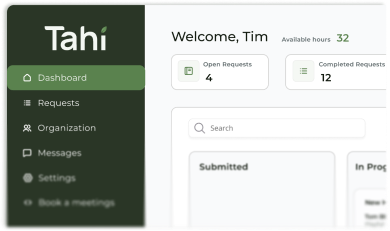Information Architecture (IA)
Information Architecture is the practice of organising and structuring content on a website so users can easily find information and complete tasks.
Why is Information Architecture important for a business website?
Think of Information Architecture or IA as the digital blueprint for your website. It is the invisible structure that organises all your content, making it easy and intuitive for visitors to navigate. For a business, this is absolutely critical. When users can find what they are looking for without frustration, they are more likely to stay on your site, engage with your content, and ultimately become customers.
A strong IA directly improves the user experience (UX), reducing bounce rates and increasing conversions. It also plays a significant role in Search Engine Optimisation (SEO). Search engines like Google favour websites that are logically structured because they are easier to crawl and understand. A clear hierarchy tells search engines which pages are most important, helping your site rank better for relevant queries. In short, good IA is the foundation for a successful, user-friendly, and visible website.
What does an Information Architecture process look like?
Creating a solid Information Architecture is a thoughtful process that goes far beyond simply drawing a few boxes on a page. It begins with deep research to understand both the business's goals and the needs and behaviours of its target users. We ask questions like what information are users looking for, and what do we want them to do?
The next step often involves a content audit, where we take stock of all existing content to decide what to keep, improve, or remove. From there, we begin structuring the information. This involves creating logical groupings for content, defining clear labelling for navigation menus, and mapping out user journeys for key tasks. The final output is often a visual sitemap or a flow diagram, frequently created in a tool like Figma, which serves as the master plan for the website's design and development.
How does Information Architecture relate to UI and UX design?
It is easy to get IA, UX, and UI confused, but they are distinct disciplines that work together. If you imagine building a house, Information Architecture is the architect's blueprint. It defines the layout, the number of rooms, and how they connect. It is the fundamental structure.
User Experience (UX) design is the overall experience of living in that house. Does the layout make sense? Is it easy to move from the kitchen to the dining room? Is the home comfortable and functional? UX design is concerned with the entire journey and feeling a user has, which is built upon the IA.
User Interface (UI) design is the interior decorating. It is the colour of the walls, the style of the furniture, and the finish on the taps. UI focuses on the visual and interactive elements through a comprehensive UI kit. A beautiful UI is important, but it can never fix a confusing and poorly planned structure. For a truly great website, you need all three working in harmony.
How does a good IA support a scalable Webflow website?
A scalable website is one that can grow and adapt with your business without needing a complete rebuild every year. A well-considered Information Architecture is the key to achieving this, especially within a powerful platform like Webflow. When we establish a logical and forward-thinking structure from the very beginning, adding new services, blog categories, or product lines becomes a seamless process.
In Webflow, this translates to a clean page hierarchy and a strategically planned CMS structure. For example, by setting up flexible CMS Collections based on a solid IA, we can easily add new portfolio pieces or team members without disrupting the site's overall flow through component-based design. Without this foundational planning, a website can quickly become a tangled mess as it expands, making updates difficult and future growth a headache. A proper IA ensures your Webflow site is a flexible asset built for the long term.
How can Tahi Studio help build a solid Information Architecture for my project?
At Tahi Studio, we believe that exceptional websites are built on solid foundations. We do not just jump straight into making things look pretty. Our process is rooted in a strategic approach that always begins with understanding your business goals and your users' needs. Building a robust Information Architecture is a non-negotiable first step in our design and development process.
Whether you are on our flexible subscription or engaging us for a specific project, we dedicate time to mapping out the structure that will best serve you. This commitment ensures your Webflow website is not only beautiful and effective on launch day, but also organised, intuitive, and ready to scale as your business grows through our strategic approach. It is a core part of our promise to deliver uncompromising quality and be a true partner in your success.






